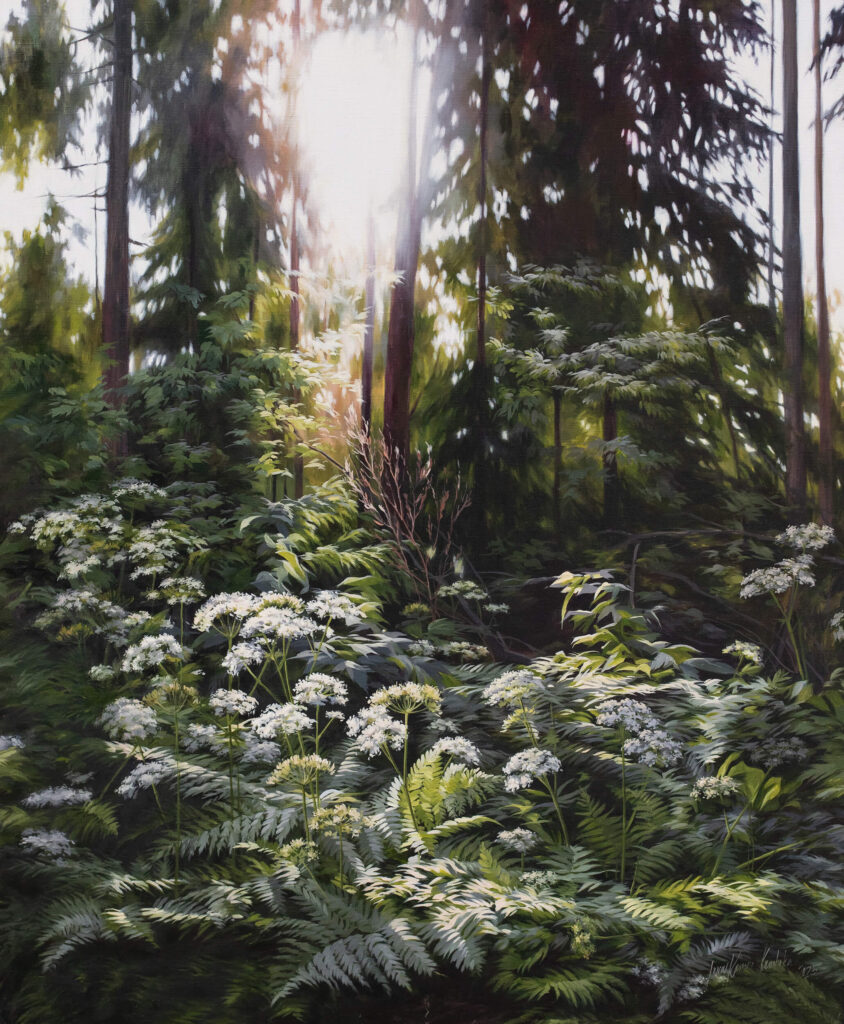2025 Finalists
Andris Kaļiņins (b. 1994 / LV)
Prussian Green. Plate 5.
55 × 66 cm / oil on canvas / 2025
“Prussian Green. Plate 5” is one of a series of paintings in which the artist explores the paint Prussian Green. In this instance, the painting takes the form of a catalogue plate from an indeterminate image catalogue, perhaps it is a book on history. The painting compares two abstract units that are both described as Prussian – paint and territory – and explores how paint might be analogous in overtaking the canvas just as military power can take over territory.
The piece belongs to a broader series shaped by the low, persistent anxiety of living next to a neighbour that imagines territorial expansion. Paint manufacturers maintain a taxonomy of politically loaded pigment names; among them, Prussian Green can speak most comprehensively to the anxieties of the inhabitants of the Baltic states. The one-letter slip between “Prussia” and “Russia” is not an argument, only a phonetic echo that shadows history. Thinking about the present, the painter looks to the past for patterns that recur. The main protagonist, the paint Prussian Green, on this canvas, while mimicking a photograph taken in the 1920s, takes on a military camouflage pattern, thus warning us about the landscape’s potential to be militarised. The word “Prussia” also recalls the Old Prussians, a Baltic people assimilated in the medieval period by German-speaking powers. The painting lightly touches on this link between phenomena across different centuries, connected by phonetic similarity in the name.
Approaching the painting not only as a mimetic depiction of a storyline, but primarily as an object of high craft quality, the materials used are the classic tools of oil painting that were employed by the old masters: a self-stretched and prepared canvas, high-quality high-pigmentation oil paint, and linseed oil, which altogether ensures the painting’s archival stability and its potential to remain in the future as a relic from 2025 in the Baltics.
Since the only and main character in the painting is Prussian Green, the artist cannot allow white pigments to enter the ground. Therefore the white background is achieved by using pre-bleached natural fabric and priming with a transparent ground. To secure a clean light field behind a single layer of colour, the canvas is lined with a second white fabric layer beneath the primary linen. Text on the surface is painted in the same Prussian Green oil paint and mimics printing ink.
The composition is built according to book graphic design principles, adopting proportional margin widths. Shown alongside other plates from the series, the work contributes to a strange catalogue. What kind of catalogue it is remains open: an art history catalogue, a contemporary photobook, or maybe even a future volume that looks back on Baltic painting in 2025.
In this object, contemporary unease meets a method of orienting by precedent. It is a calm perception exercise in which pigment carries the argument and the landscape becomes a field for thinking.
(7/25)


